Romsdal民俗博物馆凭借其出色的建筑设计以及覆盖了整个区域历史和特征的丰富藏品,将成为当地标志性的建筑。设计大量使用了本地的原材料,并通过建筑手法让结构本身去表达建筑的用途,而没有使用过多的修饰性元素。建筑的尺度根据城镇的形象和形态所制定。外部的景观设计通过统一的手法,连接了城镇各个不同的区域。开放和革新的姿态,让建筑的用途也更加灵活多变。
The Romsdal Folk Museum is an architectonic attraction and a treasured landmark that embodies the history and identity of the entire region. Our intention in this project was to let the structure signal its meaning and function through an architectural expression and the use of local materials. The scale of the building refers to the urbanity and morphology of the town. The overall layout of the museum grounds the connections to the town by linking different surrounding areas in an overall plan where all circulation is linked in a unified structure. The project conveys an open and progressive attitude that makes diverse utilization possible.
▽ 建筑外观,external view
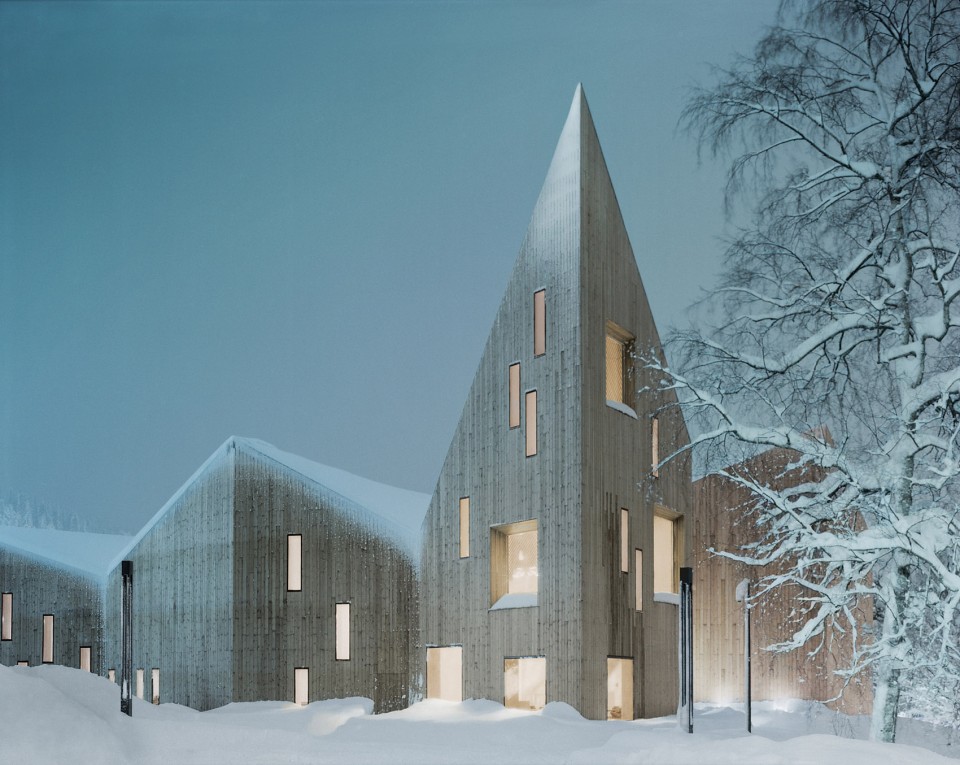
▽ 总平面图,建筑与城镇不同区域的连接,overall plan liking the different surrounding areas of the town
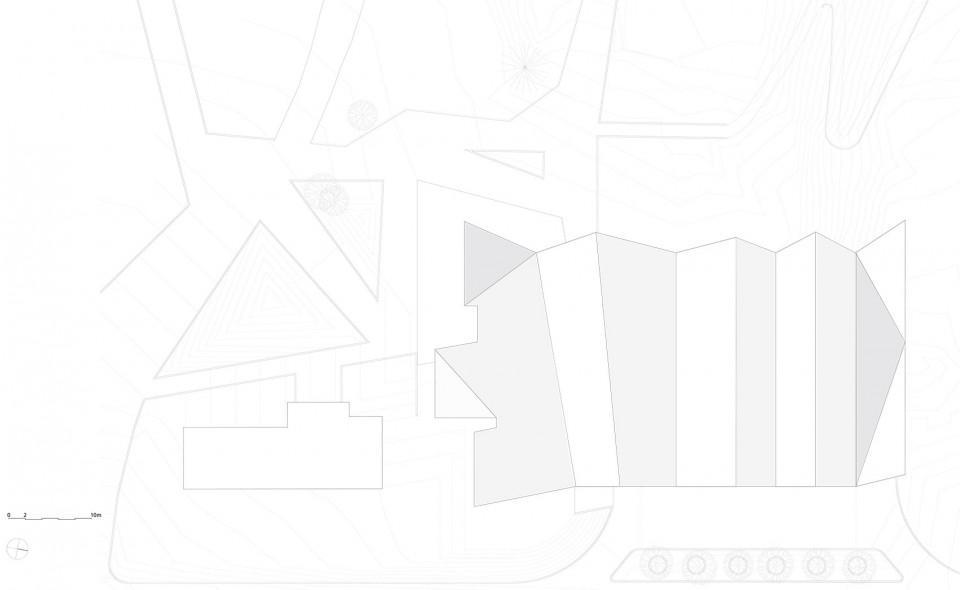
方案设计理性而可持续。建筑的平面十分简洁,有趣而极富特征性的三角空间仅出现在建筑的边缘,整个内部空间的组织和流线明确而灵活。公共区域位于建筑的首层和二层,与办公区域完全脱离。展厅、 礼堂以及图书馆都位于首层,方便到访者的出入,同时也为空间增加了更多灵活运用的可能性。开放式的前台可以为室内外活动提供服务。常展展厅和临时展厅间以大型的推拉门分割,管理者可以根据需要调整空间的大小。档案室和工作室都位于地下层,通过一个大型的货梯与上层空间联系,运送展品。
The Museum design approach is rooted in rationality and sustainability. The plan geometry is deceptively simple, the characteristic angled shapes are limited to the roof and the external wall, making the circulation and internal organisation clear and flexible. The public areas are clearly separated from the administration wing, which is located on both the ground and first floor. Exhibition rooms, the auditorium and the library are all placed on the ground floor to increase flexibility and user experience. The transparency of the reception room permits supporting internal and external activities. Large sliding doors separate the permanent and temporary exhibition areas, giving the curators the ability to combine or separate the spaces. The archives and workshops are located on the basement level, with the vertical circulation of large items facilitated by a large goods lift.
▽ 简洁的平面与极富特征性的三角空间,simply plan with the characteristic angled shapes at the periphery
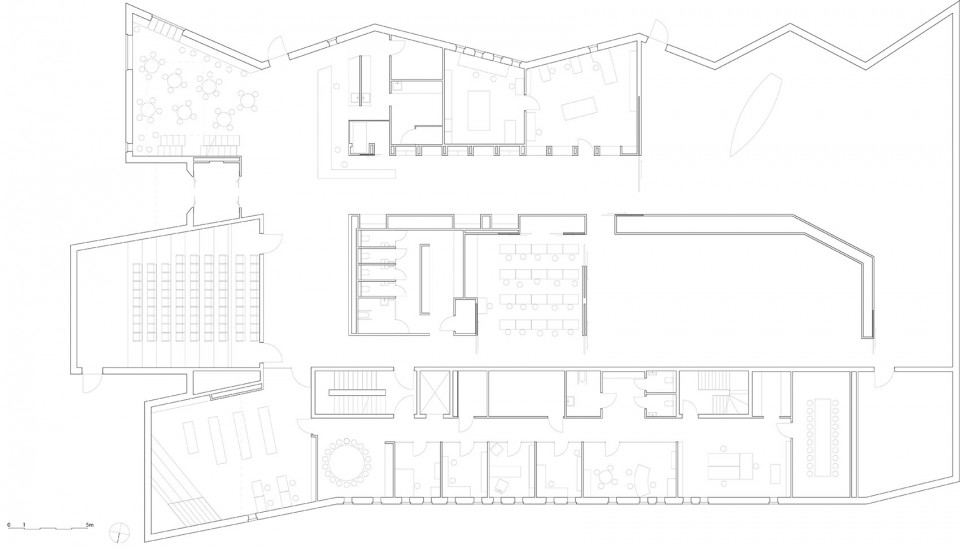
▽ 剖面,通透灵活的内部空间,sections,transparency and flexibility of the interior space
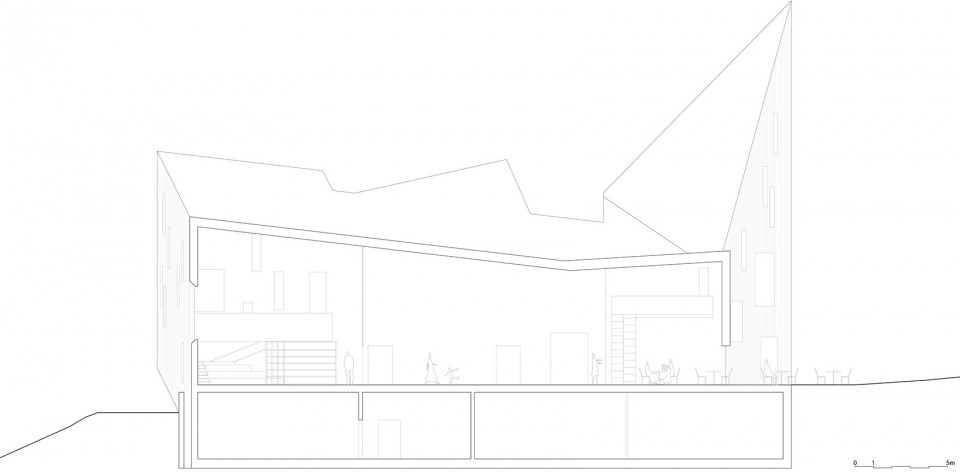
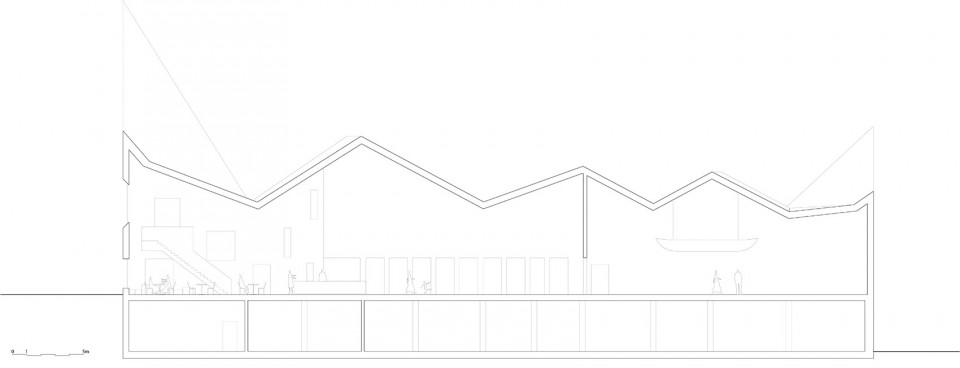
在材料上,建筑大量使用了松木。建筑的外立面和屋顶都使用了实木,辅以钢梁作为支撑。由于岩层的结构需要,建筑必须使用混凝土,但是建筑师仍将使用量减至了最低。在外立面和屋顶的松木养护方面,则全部使用生物型的保养油。
Pine is the primary building material of the museum. Exterior walls and roof are made of solid timber in combination of steel beam when required. The terrain entailed the use of concrete, however its use was reduce to the foundations. Exterior walls and ceilings covered with maintenance-pine relief tempered with bio-based oil.
▽ 以松木为主材料的建筑融入到周边环境中,wooden architecture in its surrounding
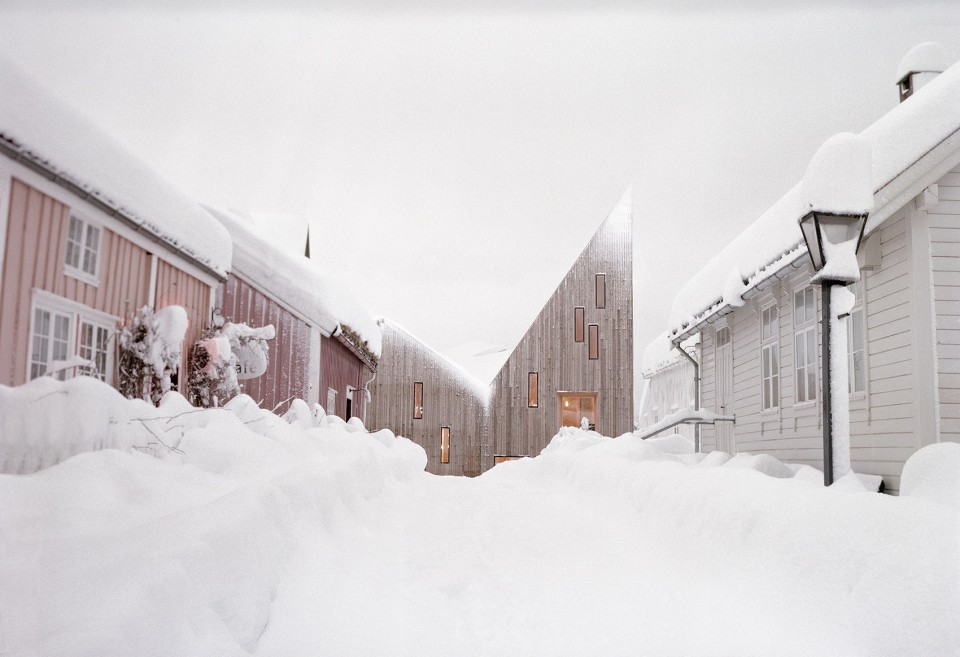

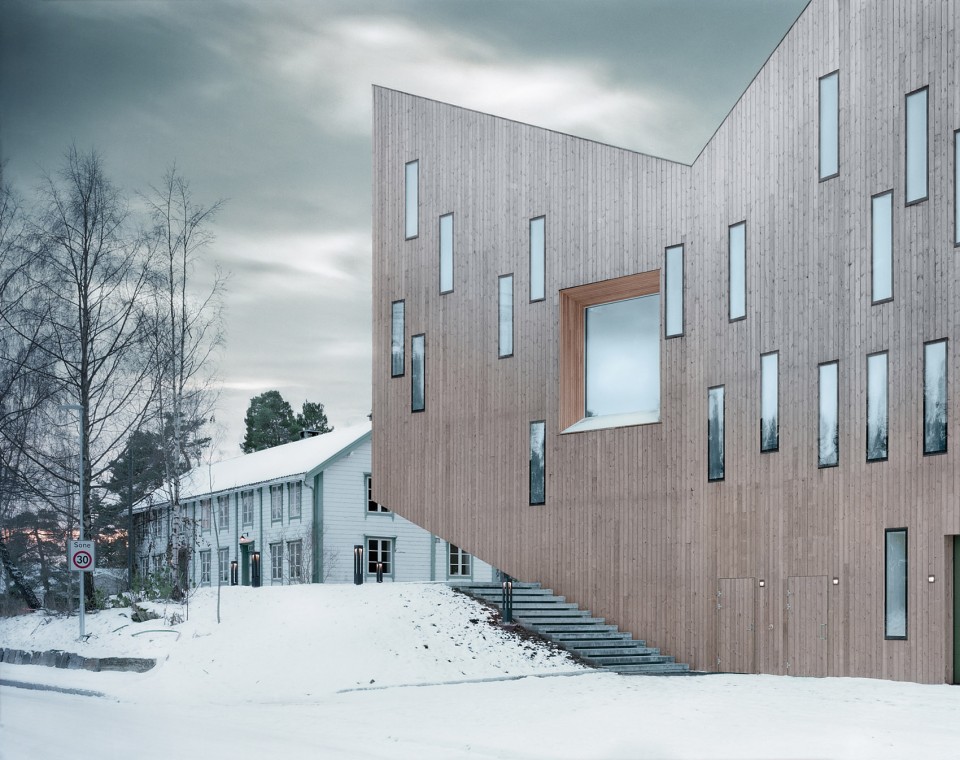
▽ 内部也以松木为主,pine used as main material indoor too
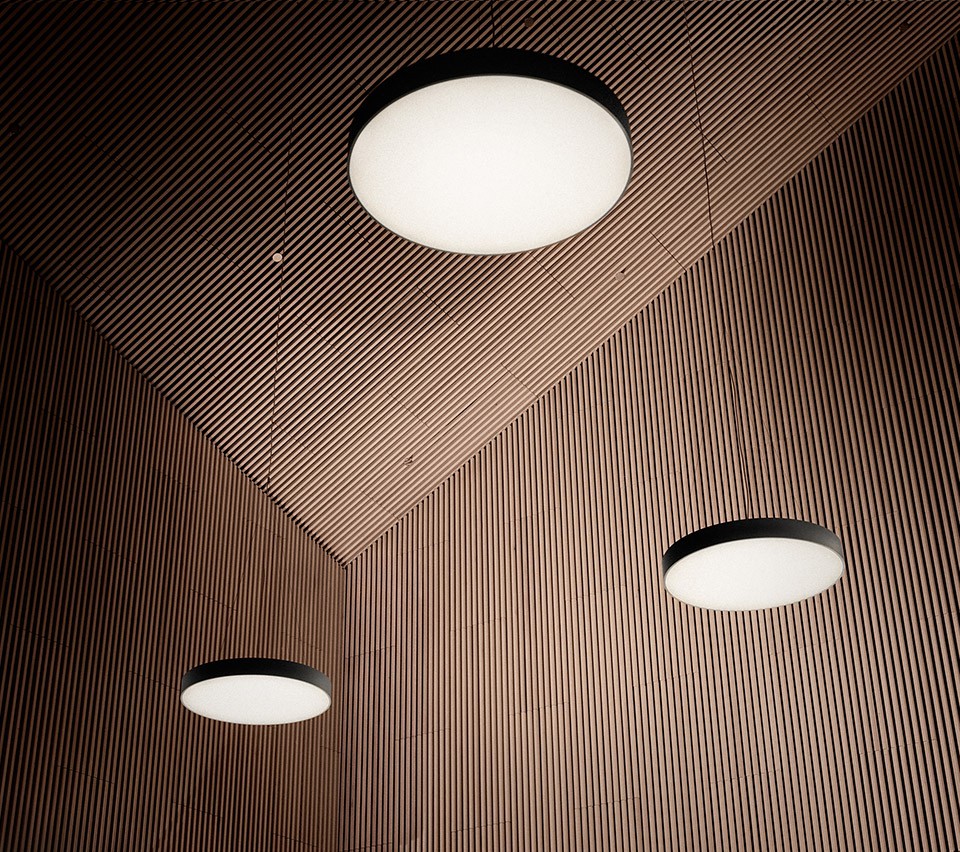
大小、方向、形状各不相同的开窗让室内空间沉浸在层次丰富的光影中。主展厅的空间则是完全封闭的,照明情况完全取决于管理人对人工照明的运用。所有的玻璃部件都使用了节能玻璃,在一些特顶的位置的玻璃则以丝网印刷被覆上了色彩和图案。
Different openings filter the daylight in such way that the internal space are enriched by gradations and translucency nuances. However, the main exhibition rooms are black boxes, giving the curators total control of artificial lightening in these areas. All the glazing units have high-energy performance glass, in some locations with silk printed colours and patterns.
▽ 大小、方向、形状各不相同的开窗,Different openings
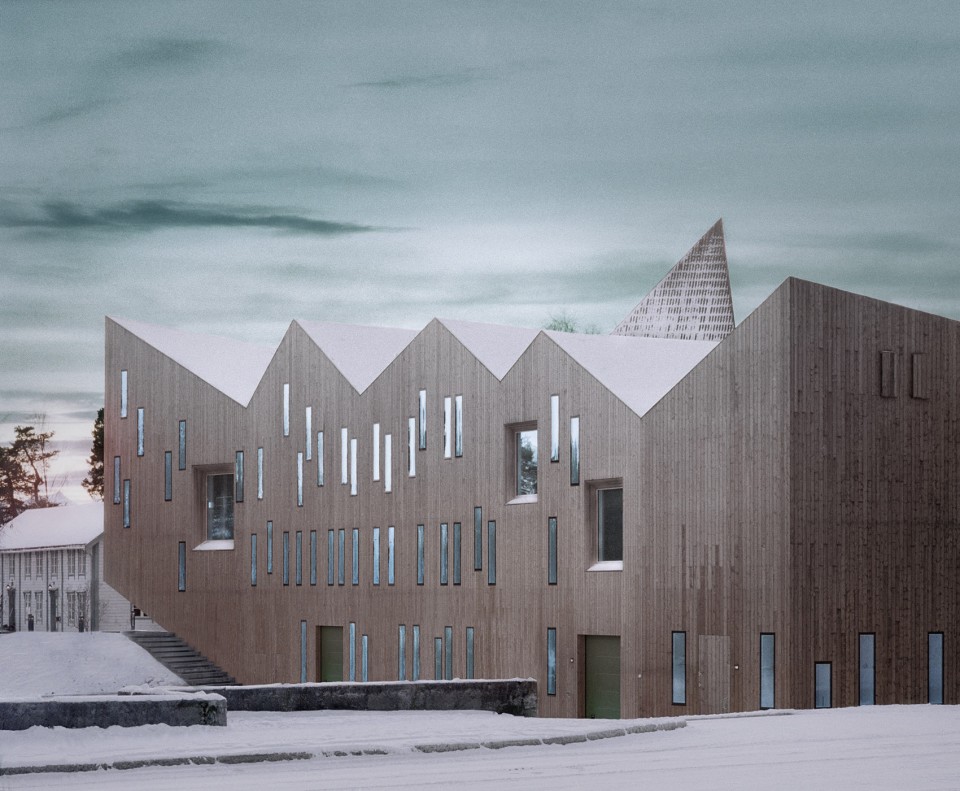
▽ 层次丰富的光影,gradations and translucency nuances
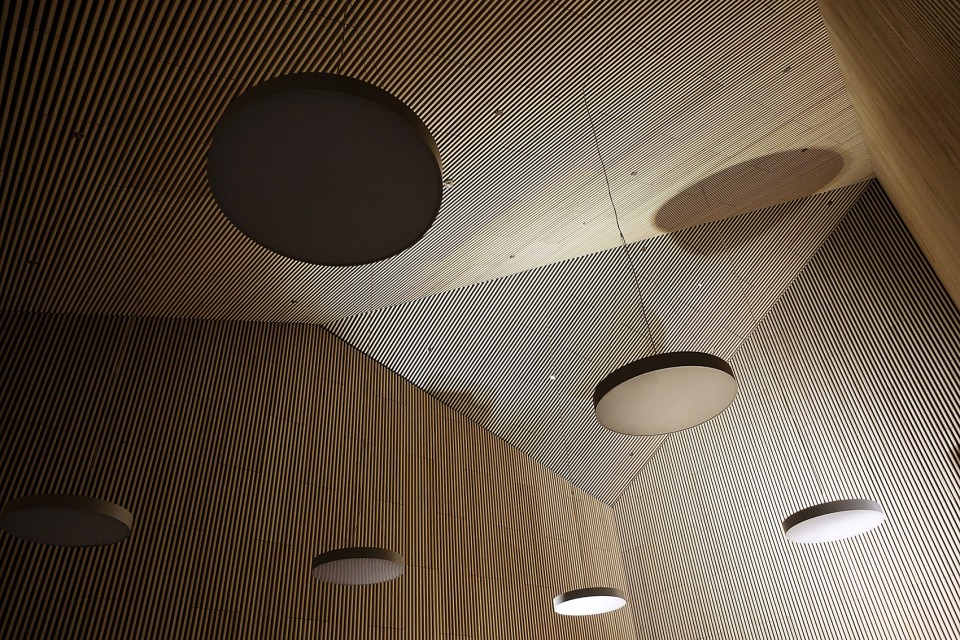
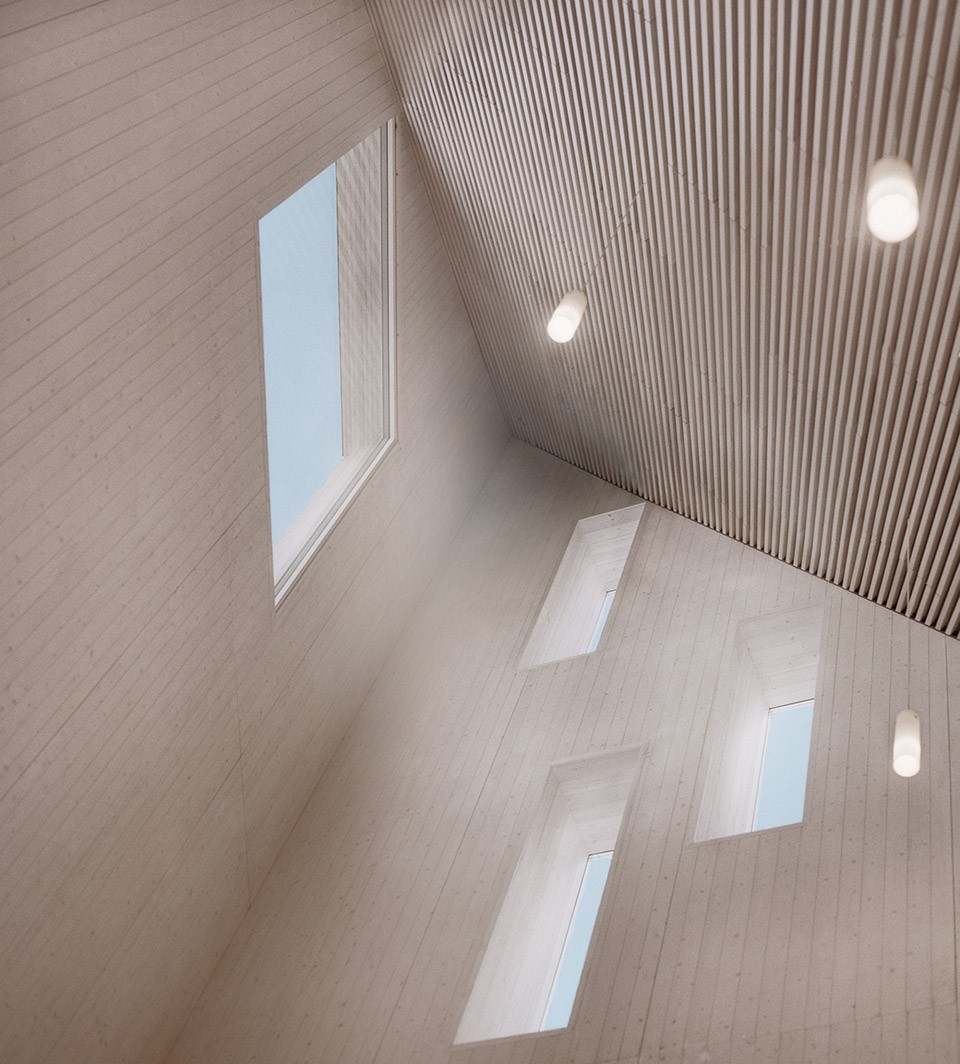
建筑对挪威社会的影响 Impact on Nordic society
Romsdal民俗博物馆的落成,是策略性使用低技术建筑的范例。它符合挪威意图打造可持续型社会的国家政策。建筑的建造沿用了挪威的木构技术,并成为区域文化发展的中心。当地居民与参观者、游客在建筑内形成了联系,共建了一个更大范围的群体。博物馆将不仅承办与挪威文化相关的展览,也将以天为单位,举办音乐会、研讨会和讲座。建筑的形式融合了区域民俗文化和特征性的景观元素。多元化的观点展示和活动吸引了更广泛的受众,博物馆将成为人们探索地域历史,当代文化和未来的生活中心。
The Romsdal Folk Museum is a great example of strategic use of low-tech building solutions. It embodies the national policy in Norway to aim for a more sustainable future. The museum is built using Norwegian timber technology and acts as a hub for cultural development.
In this building, the people of Molde as well as visitors and tourists are given the opportunity to connect and to build a wider community. The museum hosts not only exhibits about Norwegian culture but also concerts, workshops and lectures on a day-to-day basis.
The architectural form brings together the region’s folk culture and the area’s characteristic landscape qualities in a larger composition. The range of perspectives and activities ensures a broad audience, with the museum becoming a living centre for the exploration of the region’s history, contemporary culture, and future.
▽ 立面图,elevations
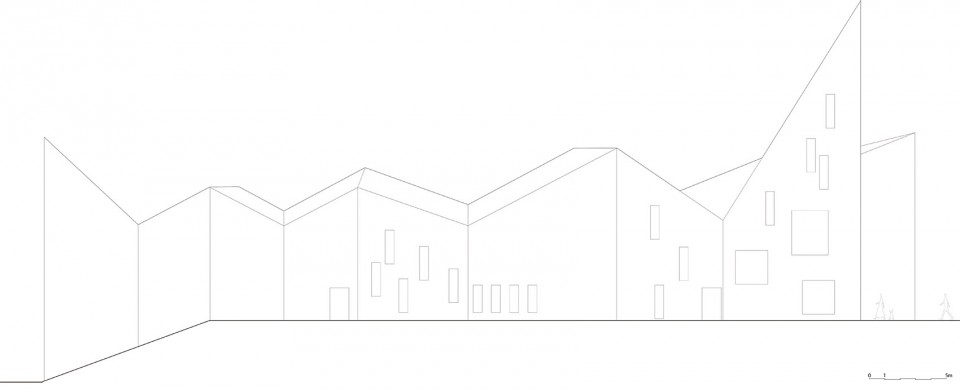
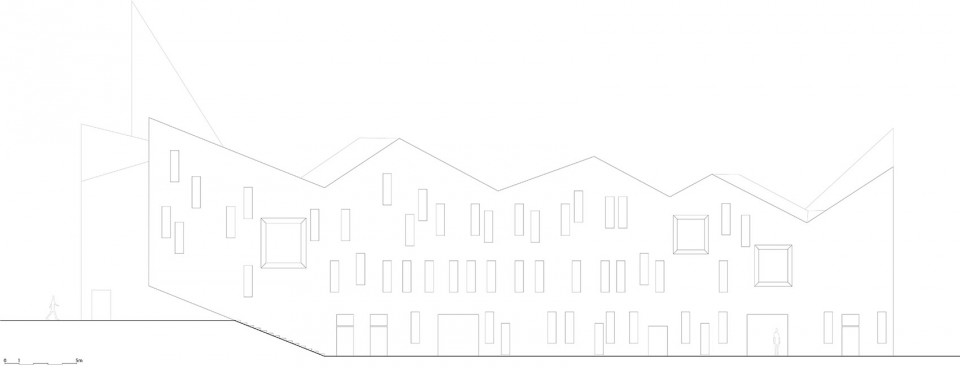
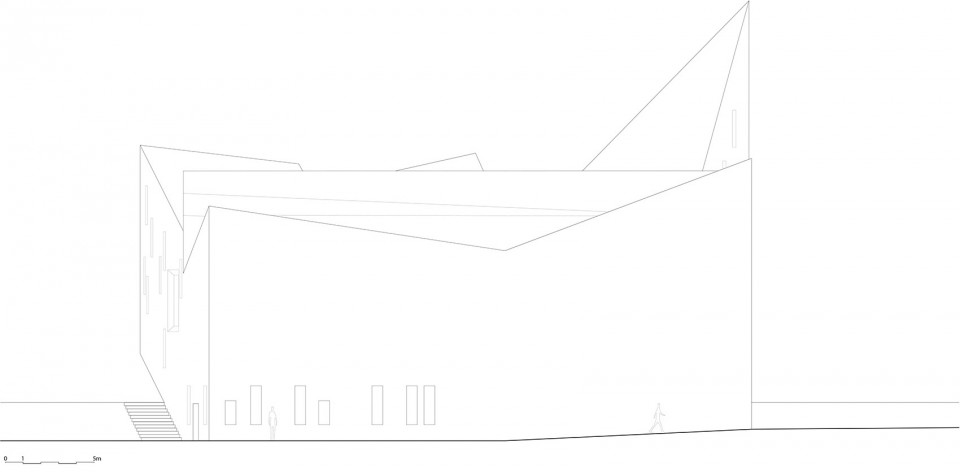
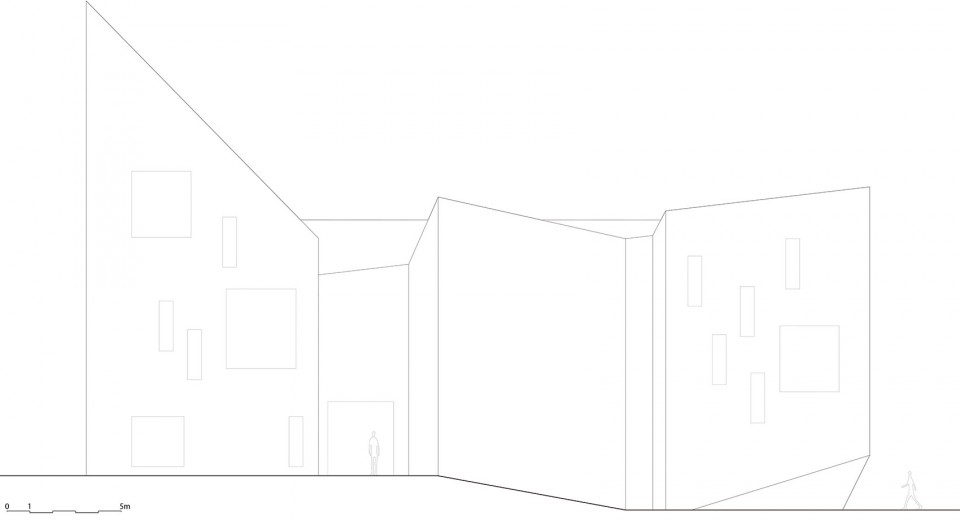
类型: Culture(文化)
位置: Molde, Møre og Romsdal, Norway
项目: Exhibition and administration building
客户: Stiftelsen Romsdalsmuseet
体量: 3,500 ㎡
Commission type: Invited competition (2007) , 1st prize
Status: Completed (2016)
Photo credits: Erik Hattrem, Reiulf Ramstad Arkitekter
绘图 Reiulf Ramstad Arkitekter
文本: Reiulf Ramstad Arkitekter
via Gooood











